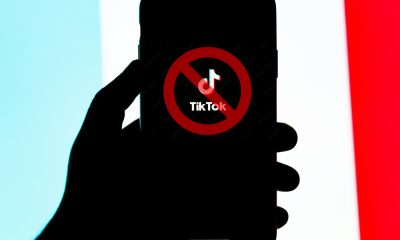By Mark Waghorn via SWNS
Cancer could be cured with 'seek and destroy' immune cells... taken from a patient's own tumor.
In experiments on mice, growths dramatically shrank - or completely disappeared.
The technique could revolutionize personalised therapy.
A 3D printed device harvests and sorts hundreds of millions of cells - increasing the number of 'tumor-eaters' fivefold.
Corresponding author Professor Shana Kelley, of Northwestern University, Evanston, Illinois, said: "People have been cured in the clinic of advanced melanoma through treatment with their own immune cells that were harvested out of tumor tissue.
"The problem is, because of the way the cells are harvested, it only works in a very small number of patients."
Most cancer drugs involve toxic chemicals and foreign substances - causing harmful side effects and weakening natural defences.
Using tissue from one's own body eliminates the risks.
via GIPHY
The study in Nature Biomedical Engineering focused on immune cells called TILs (tumour-infiltrating lymphocytes).
They invade cancerous tissue by engaging in a "form of hand-to-hand combat," said Prof Kelley.
She likened it to "someone using insecticide on a weed." But previous researchers have been armed with a half-expired canister of chemicals.
Therapies in clinics today use a mixture of "exhausted" and "naive" cells to treat tumors.
They are grown in labs far away from the patients they were collected from.
By the time they have multiplied and are ready to be placed back in the body, many are unable to fight - having been in the tumor for too long.
Prof Kelley and colleagues turned to a state-of-the-art technology called MATIC (microfluidic affinity targeting of infiltrating cells).
It enabled them to identify the most active - described as the 'Goldilocks population.'
Survival rates in rodents soared compared to traditional methods of TIL recovery.
Prof Kelley said: "Instead of giving mice this mixture of cells with different phenotypes, we are giving them the one cell phenotype that can actually help them.
"You see much more potency and a much higher response rate when you really home in on the sweet spot of T cell reactivity."
It would be feasible to bring the 3D-printed device into hospital settings, she said.
Getting cell therapy closer to patients would slash research and development costs and ultimately deliver the treatment to more people.
She is now using the tool to search for the same types of TILs in blood samples.
This would eliminate the need for surgery to remove a small piece of the tumor prior to this form of treatment.
Prof Kelley has launched a small company to commercialize it.
She said: "When we take on the development of a new technology, we typically end up with a hammer, and then need to go find a nail.
"We got introduced to problems in cell therapy, and it was immediately apparent that this was a perfect fit."

 Parenting1 week ago
Parenting1 week ago
 Lifestyle7 days ago
Lifestyle7 days ago
 Wildlife3 days ago
Wildlife3 days ago
 Good News4 days ago
Good News4 days ago
 Health4 days ago
Health4 days ago
 Environment1 week ago
Environment1 week ago
 Entertainment21 hours ago
Entertainment21 hours ago
 Work2 days ago
Work2 days ago








